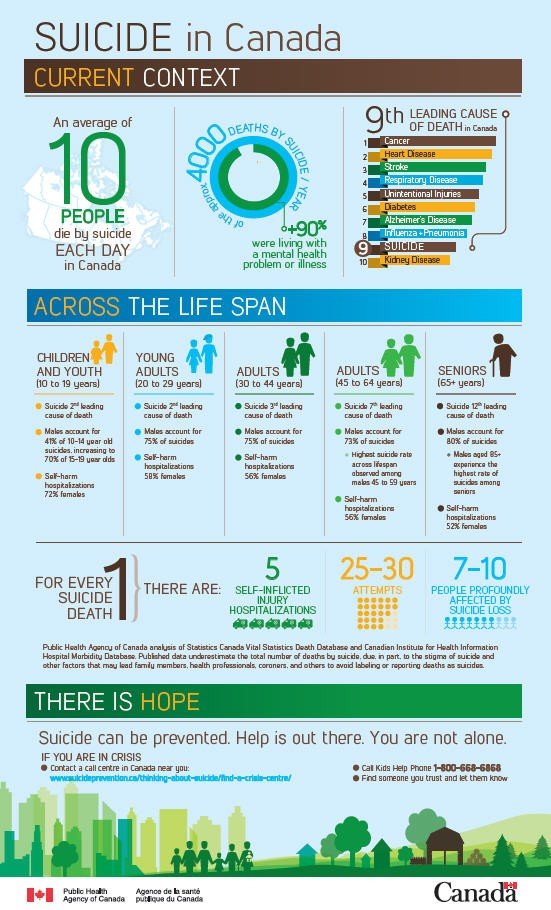Male seniors at increased risk of suicide

June 10, 2019
By Rey Rosales, Storytelling Advisor, Covenant Health
Senior men have a higher risk of suicide than the national average. Social isolation and mounting health challenges are among the risk factors.
Statistics Canada reports the average suicide rate for men aged 65 and older is about 16 per 100,000 people compared to the national average rate of 11 for all age groups. After age 80, that figure climbs to roughly 20 and then, 33 per 100,000 after age 90. For females over 75 years old, the average is roughly four.
“There are several reasons behind the suicide rate being higher among older males,” says Dr. Sandra Demaries, a Geriatric Psychiatrist at Villa Caritas, a Covenant Health mental health facility for seniors, and section head of geriatric psychiatry for Alberta Health Services (Edmonton Zone).
“Even now in 2019, despite increased awareness, there are still lingering generational taboos around mental health and suicide, particularly in older males. Stigma and sense of shame, though not exclusive to seniors, tend to be more pronounced in older generations.”
Living longer
Sandra says there are many positives to living longer and seeing more of life. “Unfortunately, for many older adults, living longer also means the accumulation of medical problems and challenges.”
Changes that can come with age tend to result in significant lifestyle changes as well, says Madeline Stevenson, Registered Nurse and Clinical Co-ordinator at Covenant’s Complex Mental Health Centre (St. Michael’s Health Centre) in Lethbridge.
“Seniors can sometimes experience quite a bit of loss with multiple things in their lives—loss of independence, the death of loved ones as well as a decline in physical health. A loss in quality of physical health means dealing with pain and other issues,” says Madeline.
Social isolation
Both Sandra and Madeline note social isolation is also a big mental health factor, especially as seniors lose spouses and friends over time. Perhaps due to distance, visits from adult children and other family members can also become rare.
“Social isolation may also be compounded by the fact that, at a certain point, some seniors may lose their driver’s licence and it becomes challenging for them to get around,” adds Sandra.
Role transitions
Sandra says aside from isolation, role transitions such as retirement can also be a contributing factor to the onset of mental health issues. “Retirement can sometimes mean a loss of occupational identity, and that can be a challenge—especially if they start feeling like they are no longer a contributing member of society.”
Urban and rural divide
Sandra says access to health care in general, particularly access to mental health assessment, may be more challenging in a rural setting.
She also says one of the reasons behind the high rate of completed suicide, particularly among older men, is the lethality of the means that are often used—guns and hanging. “Access to guns is particularly higher in rural settings,” she says.
Risk factors accumulate
Seniors face the possibility of various risk factors showing up at a later stage in life, Sandra says. “Any mental health challenge or illness could be due to a pre-existing condition, which was diagnosed when the person was younger. Or it could be attributed to the development of a new psychiatric illness such as depressive disorder, which is a major risk factor for suicide.”
Seniors dealing with existing or new-onset mental illness, substance abuse, disability and other physical illness are at risk for suicide, says Sandra.
Help seniors get connected
Sandra says awareness is key for prevention, noting that a family doctor, especially in rural areas, can play an important role. “We can look at doing practical things such as a doctor making a phone call just to check in and find out how they are doing.”
In areas where public transportation might not be readily available, families can look at various ways of helping loved ones, says Madeline. “If family cannot visit, perhaps a practical thing to do is arrange for a companion who can take a loved one out to watch a movie, go shopping or simply spend time with them."
Madeline says there are often community-based resources available for seniors to help connect them to others in their area.
